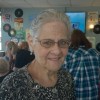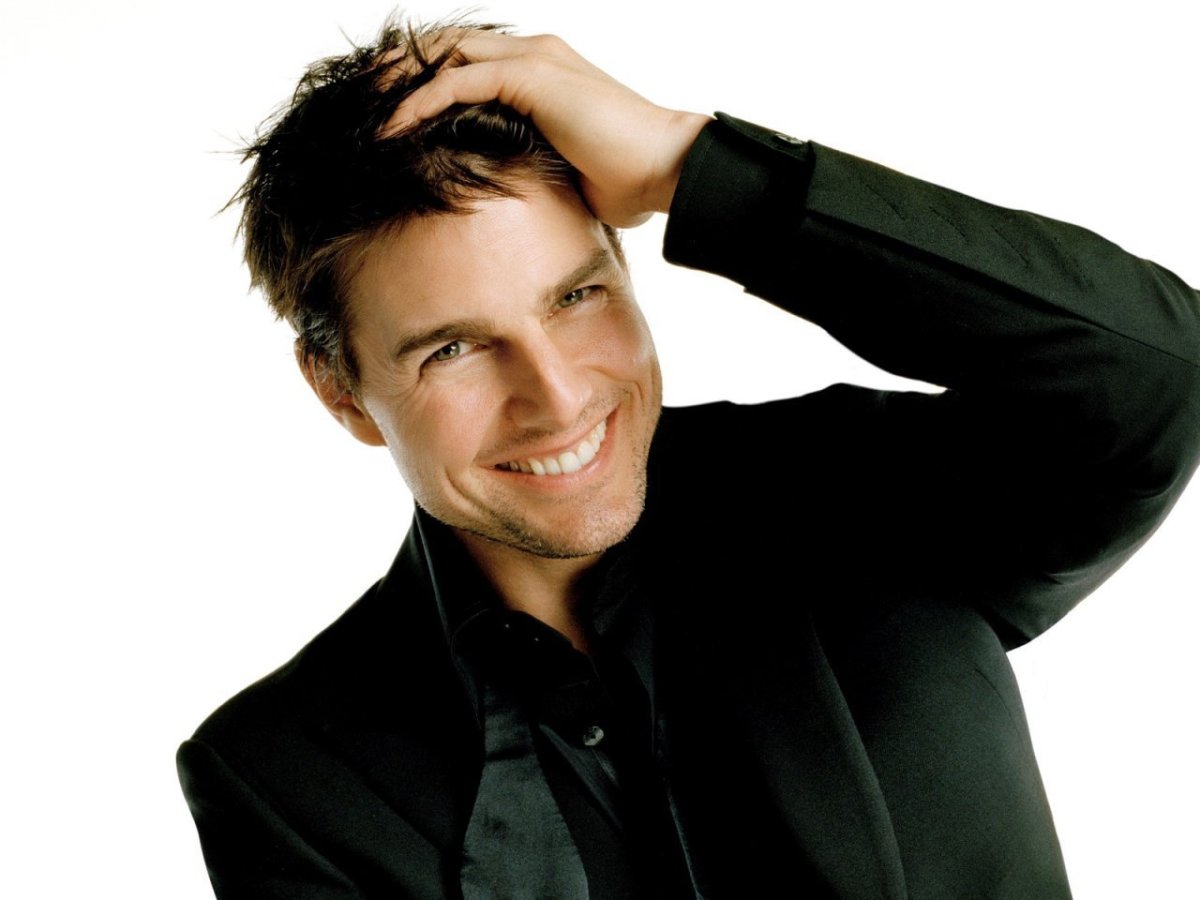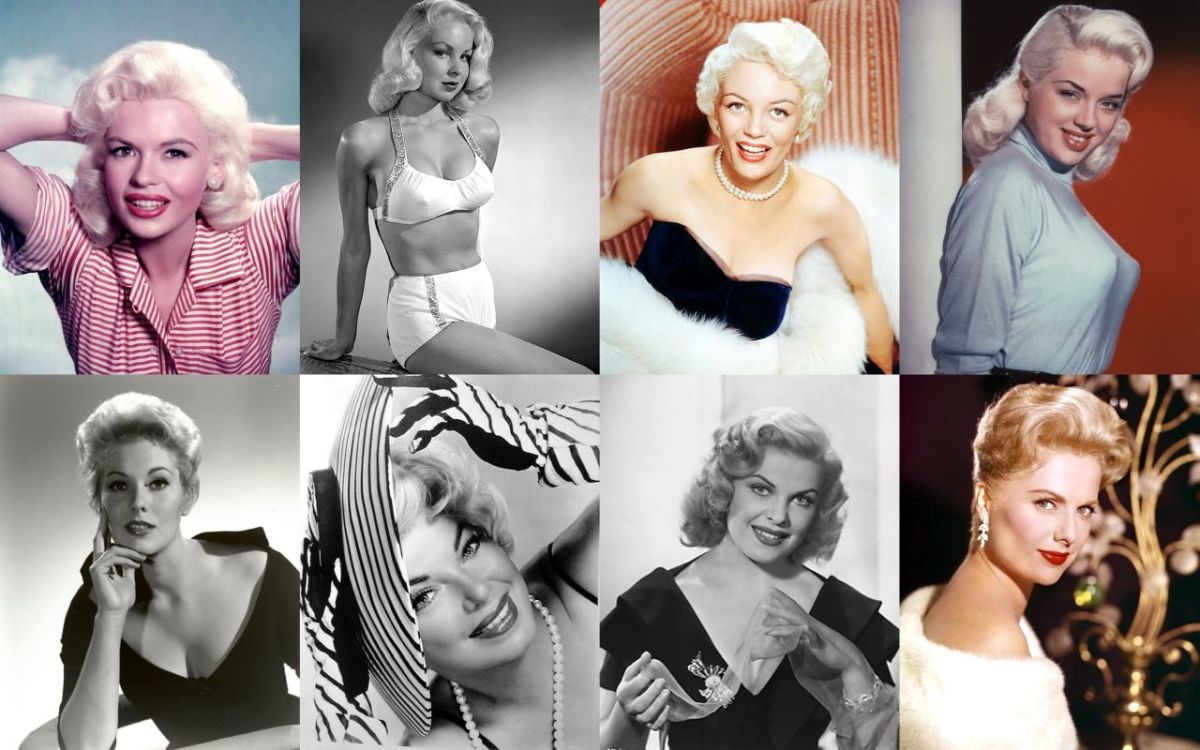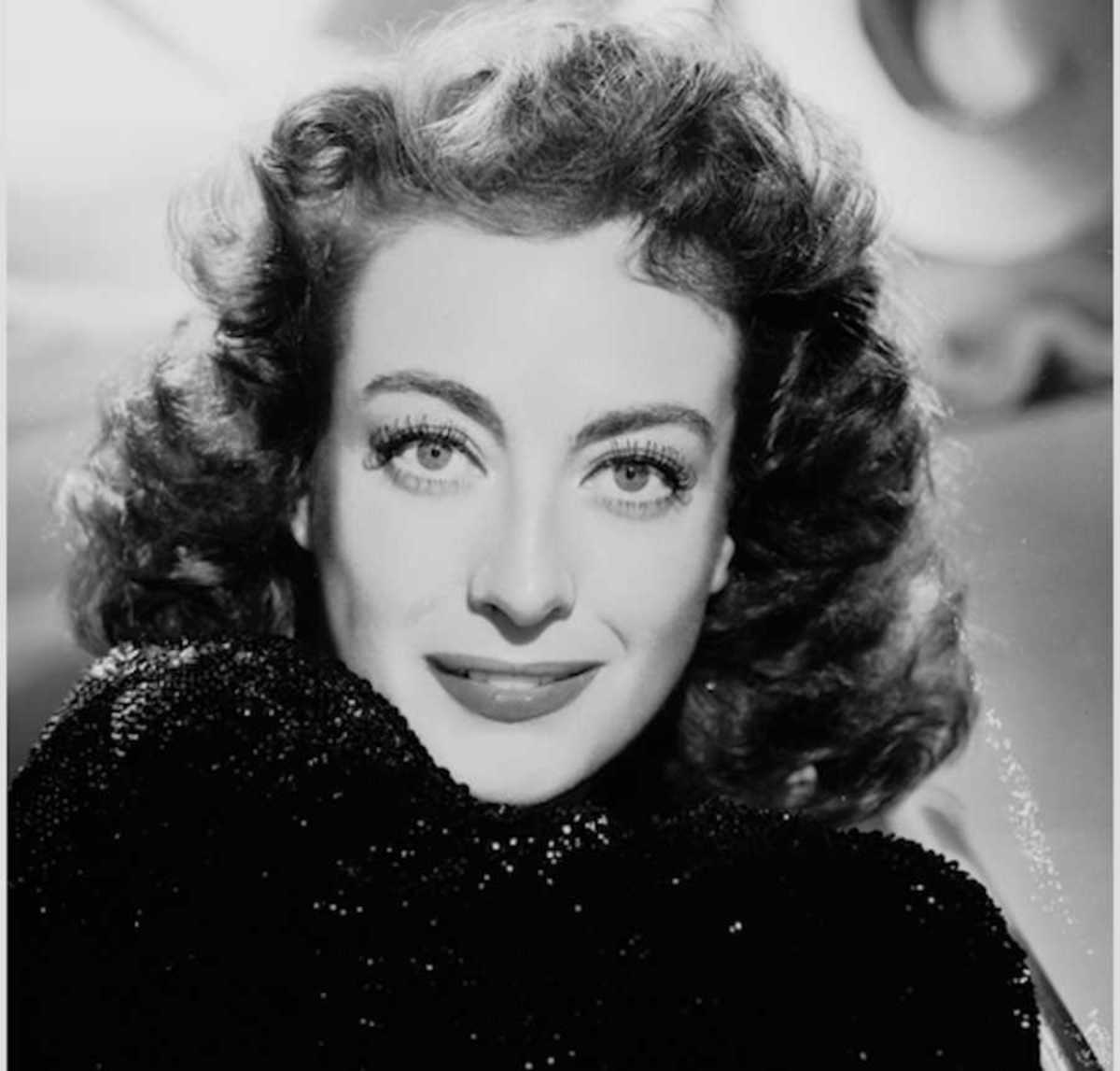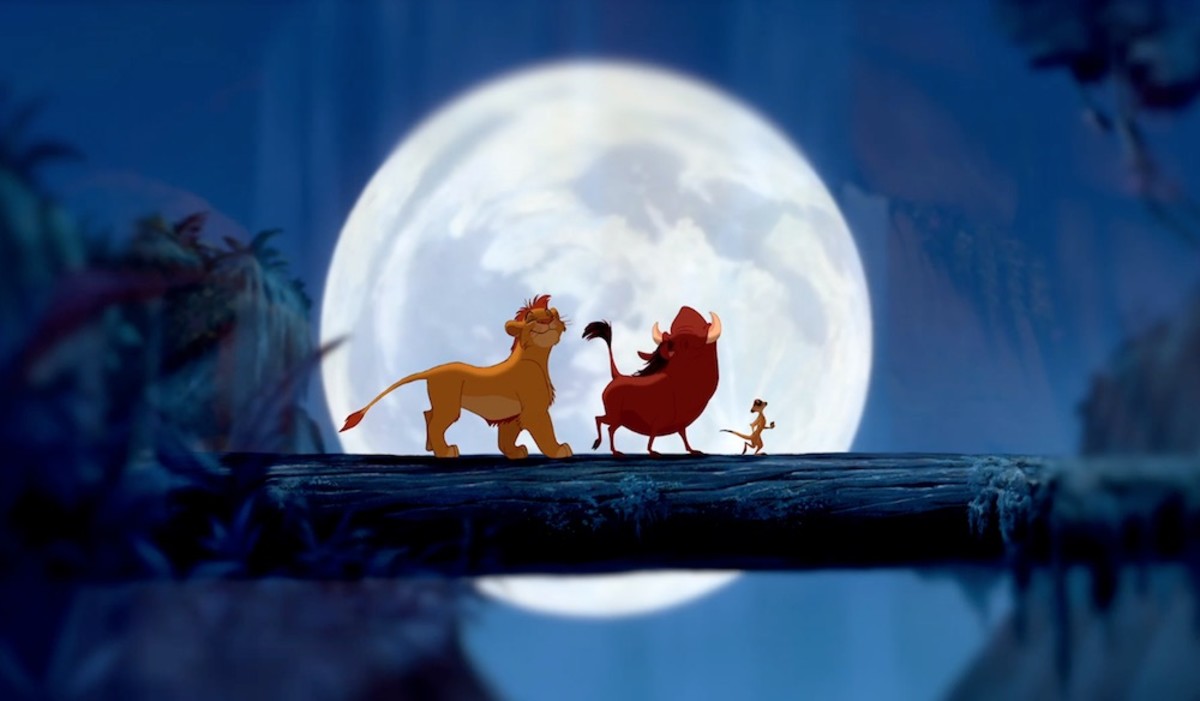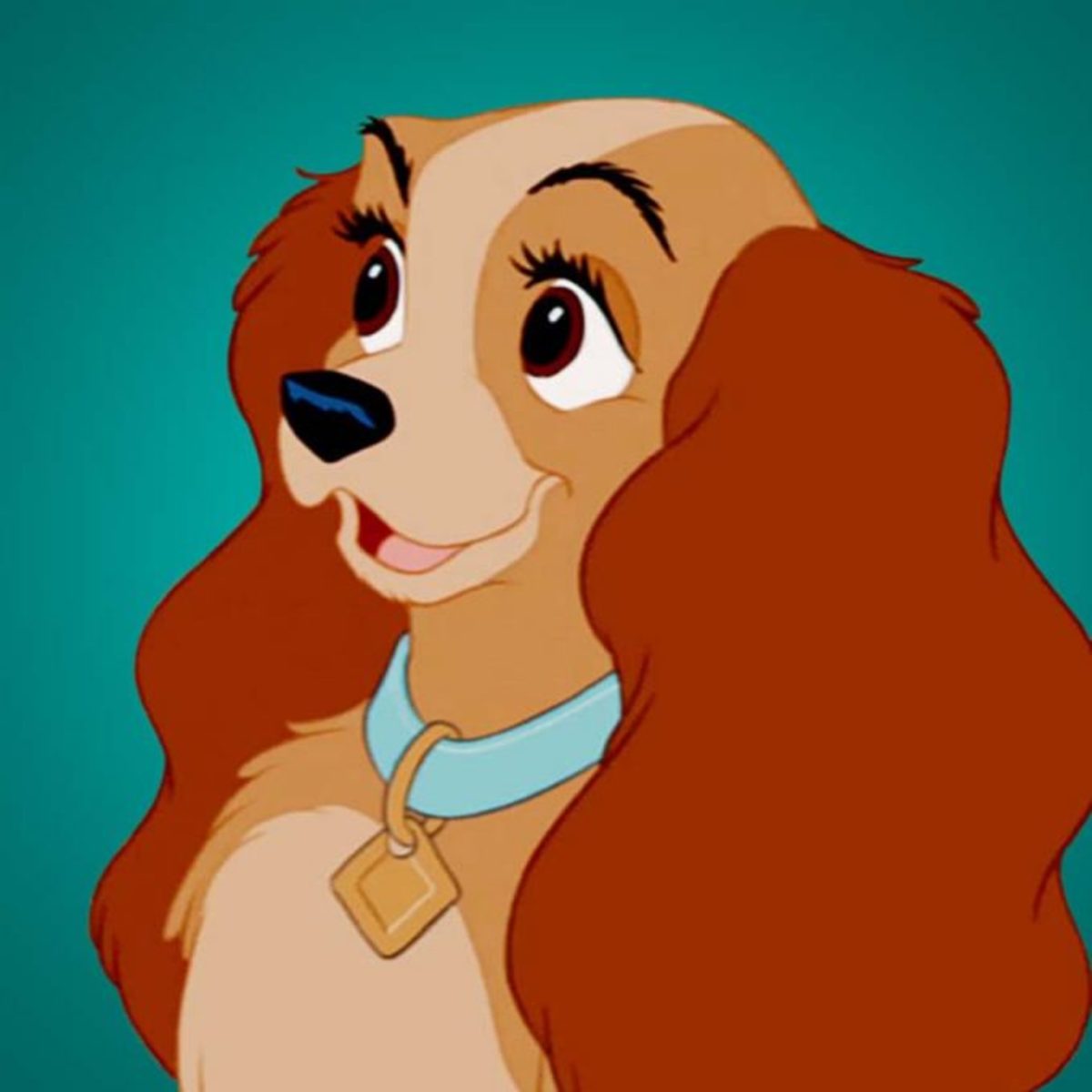Three Times the Actress


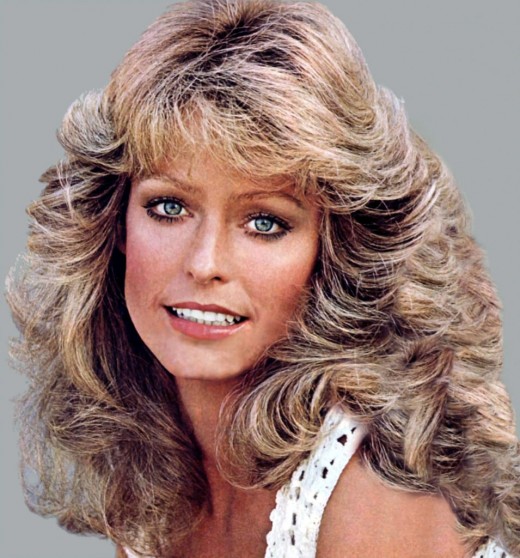
You probably won’t find a narrower minded place on earth than Hollywood. Ever since its inception it’s been more of a state of mind rather than a place.
Success in Hollywood has no barometer, no magic formula, and no proven pattern or secret. In fact it can often make no sense at all in just how or why some actors seem to easily attain it while many, just as gifted don’t and never will. No amount of preparation, tenacity or even talent can predict who will succeed and who will remain in the background. And for everyone, most particularly for the actor who is out there, psychologically exposed, vulnerable (‘acting is turning around slowly naked’ as once described by Bette Davis) it is perhaps more so than for any other participant in filmmaking. It takes an extraordinarily strong individual to withstand all of the setbacks, disappointments and rejection often faced.
An actor is frequently treated like a property or a commodity rather than as a person. And even after following all the right steps, perhaps studying and training for years and trying in audition after audition, the newcomer rarely gets a chance to prove what they can do. They are often passed over for someone else who is more well-known, with experience, connections or clout. Usually to get one’s foot in the door the fledgling actor has to settle for the caliber of role that might cause embarrassment or regret later in their careers. As far as material is concerned, just because it read well on paper, there are a million variables before completion of the finished project. So countless actors begin their careers in less than stellar roles simply because they have to gain experience and supplement their incomes somehow, often by years of doing other menial jobs while waiting for a break and sleeping on a good friend’s couch. It seems to be the nature and condition of the profession. Not unlike pounding your fists against a brick wall.
If the opportunity does arrive but the project is poorly made, or a role is cut back, it is basically beyond the actor’s control. How frustrating it must be to do your best work only to find your performance lost in a terrible film or even worse, having your wonderful performance left on the cutting room floor. You tried your best but no one will ever see it now. But an actor has to start somewhere and very few can start at the top with the most prestigious opportunities or best material. Those occasions are very rare because as I have yet to mention the most elusive elements of all in becoming an acting success are the quantities of luck and timing. Preparation is important, but luck and timing is paramount in many cases.
Welcome to Hollywoodland
According to legend, Hollywood began in 1914 when Cecil B. DeMille decided at the last minute to film his movie, ‘The Squaw Man’ in Los Angeles. But another budding filmmaker, DW Griffith had already shot a picture in the village of Hollywood in 1910. It wasn’t until about 10 years later that the film industry began to truly take off. Soon big companies like 20th Century Fox, RKO, Warner Brothers and others with the power and money established themselves and their studio systems with ‘stables’ of stars (interesting term). You had to sign a contract or you didn't work as an actor. A contract meant doing everything on their terms. But the studios prevailed and America slowly and firmly began to take its place as the formidable movie making capital of the world.
The state of California, known for its beautiful weather and the rumored lure of glamour, reward and riches in the film business began to draw people with talent and aspirations from all over the world. The 1930’s became the golden age of Hollywood and with the advent of sound and continuing advancements in the methods of filmmaking (still evident today in the age of CGI), there was no stopping this popular industry. Even in the bad times of World War II, Hollywood reestablished itself as a resource for countless war films that bolstered the righteous cause and spirit of many Americans. In 1946, the industry reflected an all-time high to that point in theater attendance and profit. People went to the movies to be informed, entertained but most importantly to be taken out of their own difficult lives and hard times right after the war. The genre would only continue to grow in popularity. Even with the advent of television (which in its infancy was a tiny black and white screen placed in a huge clunky piece of furniture) it did not dampen the magic of going out to a movie.
With each continuing decade, the industry reflected the interests, attitudes and morale's of the times it existed in. Once curtailed by limited technology and soon ruled by stringent codes of censorship primarily by The Hays Office, the strict tone of the industry began to slowly and steadily loosen until it literally started to disappear. In every way movies have run the gamut of creativity, boldness, and innovation and not only kept up with the times but even began to foresee the future. Meanwhile actors became in a class by themselves. Their popularity made them legends, achieving huge favor among audiences and rewarded with big salaries and accolades. The glitz and glamour outweighed the impossibility and was very enticing. Perhaps nothing became more alluring to the average young person than to become a famous movie star. Of course the odds were untenable but that never stopped the flow of young and ambitious trying their luck in Hollywood. Yes, there were several ‘flash in the pans’, but ultimately you had to have something unique and special that producers, directors, writers and the public wanted and be individual enough to stand out to ultimately succeed.
Acting - 'A Beautiful Perfection'
I have always been enamored of actors. Perhaps simply because even if I thought I had the talent, I could never have the courage and perseverance required. And the rejection can be monstrous. One has to constantly remain indomitable in their determination. It’s your dream and you cannot allow anyone to extinguish it! But even at your best you may still not be what they’re looking for. This often is the formula that traps many actors into accepting parts they really don’t like or want, or that they even feel will further their careers. But above everything else an actor has to deal with, he must also have the patience to wait for the right role. But that role and that time may never come. Isn't that why it’s called a dream and not a certainty. Climbing the steep ladder of success takes a lot of effort, hard work and talent, too much time for most.
I, like most people, have my heroes and heroines among actors. The force of character it takes not to mention the ability and the qualifications for a role often requires what is beyond the average person’s reach. You must be a chameleon with a thick skin to deal in such a competitive, sought after and privileged profession.
Hollywood has always been like a petulant child to me in its demands. Often the industry itself is not even sure what it wants or is searching for. You have to meet the scrutiny and approval of so many people – the director, the screenwriter, the studio, the fickle audience and the money men. And make no mistake, the bottom line has always been about money. They are looking for what (or who) will ‘sell’ disregarding the feelings of any one individual. The actors that have had fantastically successful careers are a very select group. For the average actor the struggle for decent parts remains a constant throughout their careers. Only the lucky few who’ve had everything fall into place, have become in demand. For everyone else it continues to be an expedition. If you are in demand, they will chase after you. But if you have not been successful achieving the right parts or opportunities you still have to chase them. This is a surely not a profession for the weak or faint of heart.
For years I have had three remarkable actresses in mind that each have suffered the highs and lows of becoming a serious actor. Each began in far less than exceptional roles. But in every case they were able to overcome and overtake the Hollywood system because of their personal strength, tenacity and astounding talent.
JESSICA
Jessica Phyllis Lange was born the third of four children in Cloquet, Minnesota in 1949. She studied art and photography at the University of Minnesota. By 1971 she left college and while in Paris studied Mime Theater and became a dancer with the Opera-Comique. She later attended the Herbert Berghof Studio in Manhattan as an acting student. She was beautiful enough to be chosen to join the famous Wihelmina modeling agency. While a model she was discovered by Director Dino De Laurentiis who was looking for a young actress for his remake of the classic ‘King Kong’. It was now 1976 and the movie did extremely well at the box office despite the fact that Lange’s performance and the film were widely panned by critics. Only film critic of The New Yorker Magazine, Pauline Kael was so taken with her that she compared her to the comic timing of the late screen icon Carole Lombard. And although she was relegated to silly one liners in the rehashed monster/adventure film, she went on to win the 1976 Golden Globe for New Star of the Year.
Jessica appeared in three more films (‘All That Jazz’, ‘How to Beat the High Cost of Living’ and ‘The Postman Always Rings Twice’) before being cast in the role of Julie in 1982’s ‘Tootsie’ opposite Dustin Hoffman. There her beauty, warmth and vulnerability shined through along with her definitive acting talent and her performance attracted Oscar attention.
For her performance in ‘Tootsie’ she won the 1983 Oscar as Best Supporting Actress. That year she did what only 2 other actresses had done up until that time. She was also nominated in the Best Actress category for her powerful, disturbing work as thirties film star Frances Farmer, who suffered from mental illness in ‘Frances’.
Despite starting out in a primarily poorly received role, which gave little indication of what was to follow, she continued in film and television to become the recipient of the ‘Triple Crown of Acting’ achieving numerous other milestones including another Oscar win, several Emmy’s, Golden Globes and a Best Actress Tony award for her Broadway performance in ‘Long Day’s Journey into Night’ in 2016. An amazing career, which actually began with an acting misstep.
SALLY
Sally Margaret Field at least in her own mind, was an industry joke because she began her career in two primarily banal and superficial roles. Born in California as Sally Field in 1946, her mother, Margaret Field (later billed as Mahoney) was also an actress. Her stepfather (who became sexually and emotionally abusive towards Sally as a child) was actor Jock Mahoney. Both parents worked in film and television but never achieved anything near the success that Sally went on to enjoy. Her mother (whom she affectionately nicknamed ‘Baa’) was always by her side when she was needed and put her own acting aspirations aside to help her oldest daughter. In the shattering 2018 biography, ‘In Pieces’ Sally fully reveals with candor and honesty just what her life was like as a child and later as a budding actress. She struggled for a long time to reconcile her early image with her actual ability.
In 1965 Sally won the role of ‘Gidget’ for television. She has described this first encounter with acting with fondness and warmth, not only as a learning experience (at first she didn’t even realize where the camera was) but in how comfortable she was working with actors like the late Don Porter, who played her dad. And to Sally he was both on and off screen the kind of father she wished she’d had in real life. She has said of Gidget “that character was the superficial part of me that I learned to use to protect myself…….I wanted to entertain…….but keep some distance…….no one ever really knew me……I wanted things (then) I hadn’t even let myself see”. The comedy only lasted for one season because of low ratings.
Producers at ABC television were looking for a vehicle to keep Sally on the air and as a result developed a comedy entitled, ‘The Flying Nun’. Although it remained for three seasons, Sally thought from the very beginning that the concept of the show was silly and never had any interest in playing the part of a novice nun who becomes airborne because of her cornette (Nun’s hat) in the strong breezes at the convent San Tanco in Puerto Rico. But she was pressured by her step-father, Mahoney to accept that part. He warned her that she might become unemployable as an actress in Hollywood if she didn’t take the role they badly wanted her for. Constantly embarrassed by the part, feeling disrespected by the producers and even called upon to ‘fly’ over an award ceremony crowd for a publicity op, she looks back today with distain at this time. One bright spot for Field was her friendship with co-star Madeleine Sherwood, a formidable and accomplished (Obie winning Off Broadway) actress herself who encouraged Sally to stick with it but pursue acting classes.
In 1967 she won her first speaking role in the feature film, “The Way West’ opposite stars Kirk Douglas and Robert Mitchum.
‘In Pieces’ relays in detail her experiences with acting class training (eventually at the famed Actors Studio in New York City under the astute tutelage of acting genius Lee Strasberg) and although her acting career primarily continued with light weight roles, her growing desire and ability to be taken seriously as an actress completely changed her focus. Difficult at first it was a struggle to change how her image was perceived by Hollywood casting agents and directors. Finally with 1976’s ‘Stay Hungry’; the television miniseries ‘Sybil’ that same year and in 1979’s ‘Norma Rae’ in which she won her first Academy Award, did the perception of Sally Field as an important and masterful actress become realized.
By 1985, Sally won her second Best Actress Oscar for her powerful, understated role in ‘Places in the Heart’. (That year she was also in the running with Jessica Lange). Overwhelmed by this second win, even more so than the first time, and after thanking co-workers, friends and her family and admitting she did not have an orthodox career she blurted out in her grateful and emotional thank you speech, “I’ve wanted more than anything to have your respect….and I can’t deny the fact that you like me! Right now, you like me!” Although genuine and heartfelt, Miss Field admitted years later that those infamous words were often taken out of context, misquoted and parodied. I remember them bringing me to tears. In fact they still do.
As with Miss Lange, Sally’s achievements and awards have become numerous. And she has demonstrated her strengths as an actress in both film and television roles; in her own series and as guest star, one most notably as Maggie Wyczenski on twelve episodes of NBC’s hit series ER, playing a character suffering from bipolar disease. That part won her an Outstanding Guest Actress Emmy and continued with several other nominations for the same role.
But even as an established star, Sally found herself once again fighting for a coveted role. She was only being considered for the part of Mary Todd Lincoln in Stephen Spielberg’s film, ‘Lincoln’. The director had second thoughts about it. But again her tenaciousness won her the role although she faced some roadblocks to it. The result – both Mr. Spielberg and Daniel Day Lewis (the film’s star) agreed she was their only Mary Lincoln after she did a screen test and gained forty pounds to look old enough for the part. Sally was ultimately nominated for an Oscar, a Golden Globe, a BAFTA and a Screen Actors Guild award for her amazing work in that film.
Sally Field has more than defied the ‘type casting’ odds by beginning her career as a charming ingénue and in the silly flights of fancy of ‘The Flying Nun’. She has become one of the most respected and admired actresses of our time because of her capability and talent.
FARRAH
Last but never ever to be considered least, was the stunning girl who transformed herself from a beautiful model and spokesperson into one of the most formidable, virtuoso actresses of memory. Her professional accomplishments were only and sadly eclipsed by her strength and determination to beat a relentless foe that ultimately took her life but not her spirit.
Of course I am now talking about the late Farrah Leni Fawcett. One of, if not the defining beauties of the seventies, she was able to transform herself from blond baby doll to serious and dominant actresses and likewise showed her expertise as an artist of canvas and sculpture.
Ferrah (the original spelling) Fawcett was born in 1947 Corpus Christi Texas the younger of two daughters. Not surprisingly she was voted ‘Most Beautiful’ during all four years of High School and ‘one of the ten most beautiful coeds’ in her freshman year of college at the University of Texas where she studied microbiology and later art.
Inevitably it was not long before she came to the attention of Hollywood. California’s talent agencies tried wooing her for several years to leave college but she continued to resist. However by the summer of 1968, she finally decided to move to California and try her luck. She was 21 and Screen Gems soon signed her to a $350 a week contract. Commercial appearances and small acting parts followed, including on the then very popular ‘Six Million Dollar Man’ TV series where she met her future husband, its star Lee Majors.
In 1976 she posed for the now legendary swimsuit photo that literally became the bestselling poster in history. She wore a one piece, red swimsuit and did her own hair and makeup. She selected six pictures from some forty rolls of film and the famous pose for the poster was seen practically everywhere. There most likely was not a young man who didn’t have a copy on their wall.
The poster’s attention won her another minor screen role. But more importantly she and her husband happen to be tennis partners of famed and prolific television producer Aaron Spelling. Mr. Spelling and his then partner Leonard Goldberg, chose Farrah for the part of private detective Jill Munroe in an upcoming TV movie of the week entitled ‘Charles Angels’. Airing March 21, 1976, the show was so well received it went on to become a series. And Farrah won Favorite Performer in a New TV Series at that year’s People’s Choice Awards. She charmingly said in an interview with TV Guide in 1977, “When the show was number three, I thought it was our acting. When we got to be number one, I decided it could only be because none of us wears a bra."
Although the stars of ‘Charlies Angels’ consisted of three beautiful and popular leading ladies, Farrah’s popularity quickly became a singular phenomenon. Her hairstyle alone was emulated by would be glamour girls everywhere and the unique look continued to dominate well into the 1980’s.
After only one season in 1977, Farrah became involved in a contract dispute with ABC. She was able to get out of her contract after agreeing to appear as a guest star on future instalments of the series. At the same time her marriage to Majors started to unravel. They both had such demanding schedules that it took its toll on their relationship.
After fulfilling her commitment to ‘Charles Angels’, she by 1978 had made several feature films which were poorly received. ‘Somebody Killed Her Husband’, ‘Sunburn’ and ‘Saturn 3’ did little to cultivate her serious acting aspirations. Just as with Jessica and Sally's first roles, she longed to get past her image and be taken seriously. Her bold move came in 1983 when she went to New York to take the part of an attempted rape victim in the raw off-Broadway play, ‘Extremities’. She later said it was the most grueling, intense, physically demanding and emotionally exhausting role of her career. But it won her critical acclaim and became the proving ground for her outstanding capabilities as an actress.
Going on to portray Francine Hughes the real life battered wife in the 1984 teleplay ‘The Burning Bed’ she garnered the first of what would be four Emmy nominations for her television work. ‘The Burning Bed’ became the highest rated television film of that season.
In 1986 she reprised her role in ‘Extremities’ on film and again won outstanding acclaim and a Golden Globe nomination for Best Actress in a Drama. Her performance also stirred some Oscar buzz however she was not nominated that year.
Now after reestablishing herself in these distinct and demanding parts she was offered opportunities in higher caliber television screenplays like Jon Avnet’s ‘Between Two Woman’; as Beate Klarsfeld in ‘Nazi Hunter’; troubled heiress Barbara Hutton in ‘Poor Little Rich Girl’ and as Life Magazine photojournalist Margaret Bourke-White in ‘Double Exposure’ which won her a Cable Ace Award in 1989. She continued to receive several Golden Globe nominations for her now prestigious television work. In 1989’s TV film ‘Small Sacrifices’ she was nominated for a second Emmy, and by now a sixth Golden Globe and the film itself won the prestigious Peabody Award for excellence in television.
Farrah continued her acting career although she remained too modest to allow nude photos previously taken of her to be published. But by 1995, at the age of 50, she posed partially nude in the pages of Playboy Magazine to make a statement about the sexiness and validity of a woman at ‘middle age’. And her statement was glorious. But her life took a horrible turn which prevented her from ever growing old gracefully.
It was 2006 and Farrah was met with the most crucial challenge of her life. Always considered literally the picture of health and vitality, she was diagnosed with anal cancer at age 59. Her three year battle with the disease began and has been documented both on film in 2009 (winning her posthumously an Executive Producer Emmy for Outstanding Non Fiction Special of her own story) and in a heartfelt book written by best friend Alana Stewart (whom she first met at a dinner party in 1979 and discovered they had similar Texas roots) who stuck by her side as did many others who dearly loved her - her family and son, her friends, her long time beau Ryan O’Neill. And there were many doctors, both in the US and Europe whom she sought out relentlessly trying to overcome her illness and explore every possible avenue of treatment.
Farrah died on May 25th, 2009 at age 62 (on the same day we lost Michael Jackson which somewhat eclipsed her death). She lost her fight with cancer but she won in the struggle to prove herself a tenacious and unflappable opponent who never gave up. And since losing that cancer battle she has remained an inspiration to others, leaving a legacy of courage for them to follow. She more than proved her mettle as an artist but her strengths as a woman have become legendary.
All three of these outstanding and gifted women remain my acting heroines perhaps just as much for how they have conducted their lives than the important impact they made on a TV or movie screen.
In order to succeed with impossible odds in a practically unsustainable profession an actor must have an unrelenting attitude to go after a dream. Seemingly unattainable, many have succeeded but only after setbacks and disappointments.
For these three remarkable, gifted and heralded actresses, that’s exactly what they did. And they consequently not only became winners in their careers, but at the game of life.
